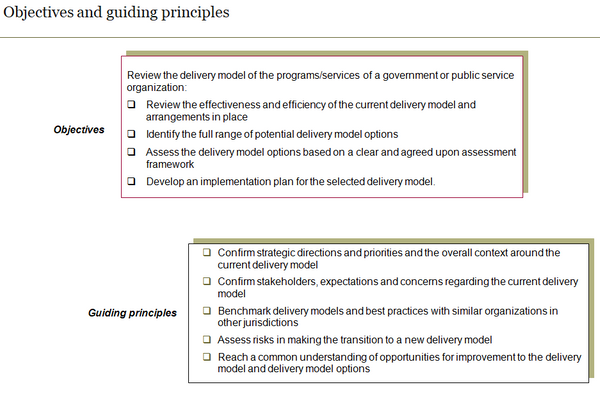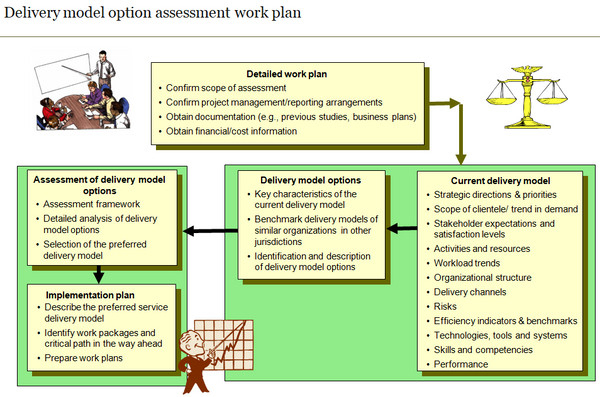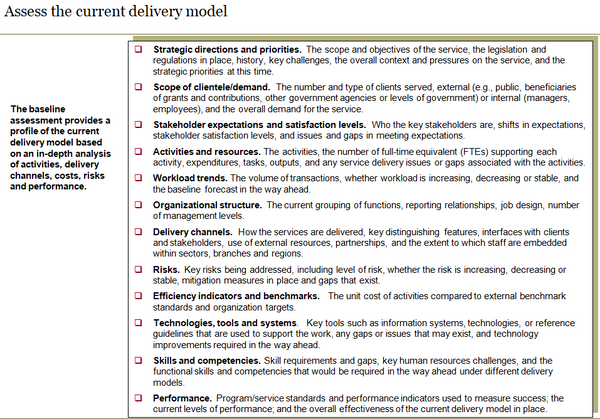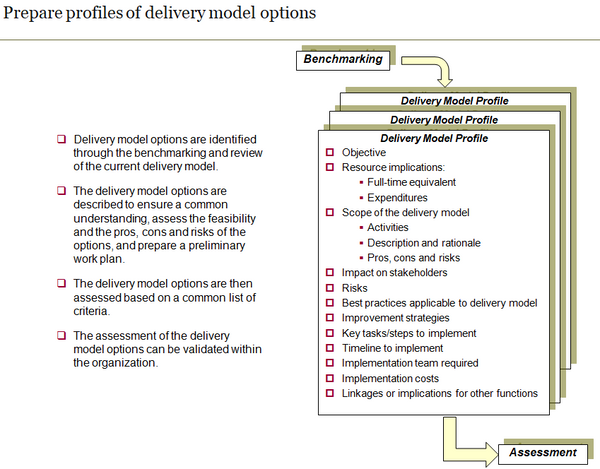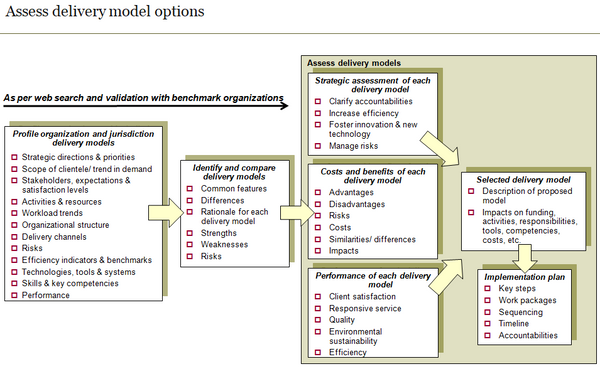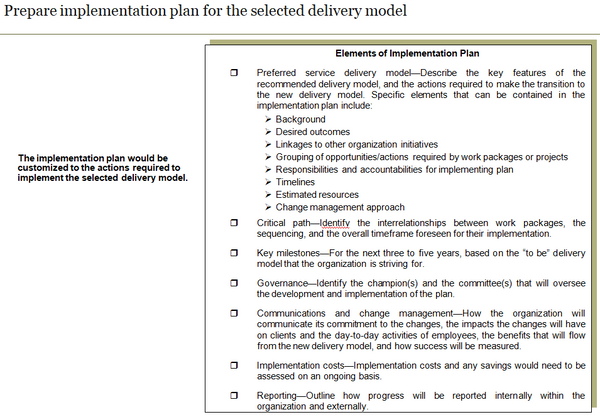Ministerial and Executive Correspondence Delivery Model Option Assessment (8 slides)
Assess delivery model options for the ministerial and executive correspondence function in government agencies.
Ministerial and executive correspondence delivery model assessment toolkit
The ministerial and executive correspondence delivery model option assessment tool (8 slides in PowerPoint) includes (see preview charts):
-
A summary work plan
-
A checklist to assess the current delivery model
-
A template to assess the delineation of ministerial and executive correspondence tasks between corporate, branch/program/regional office ministerial and executive correspondence coordinators, and program managers
-
The typical contents of profiles used to describe the delivery model options
-
An assessment approach
-
Outline of an implementation plan to make the transition to the selected delivery model.
When you purchase the toolkit, you will receive an email with a link to download the Ministerial and Executive Correspondence Delivery Model Option Assessment Tool (8 slides in a PowerPoint editable format) as well as the Delivery Model Option Assessment Guide (12 pages in Word).
Service delivery management considerations--Ministerial and executive correspondence
Key considerations in designing the ministerial and executive correspondence service delivery model include:
-
The delineation of tasks carried out within the branches, sectors and program areas, and regional offices versus those of ministerial and executive correspondence at headquarters (corporate)
-
The technology used to process, manage and track correspondence
-
The existence of an internal ministerial and executive correspondence network
-
The information management capabilities of the organization and knowledge management tools available
-
The percent of responses issued within service standards, and trends in the backlog of unprocessed correspondence
-
The need for quality control and the percent of correspondence requiring rework.







